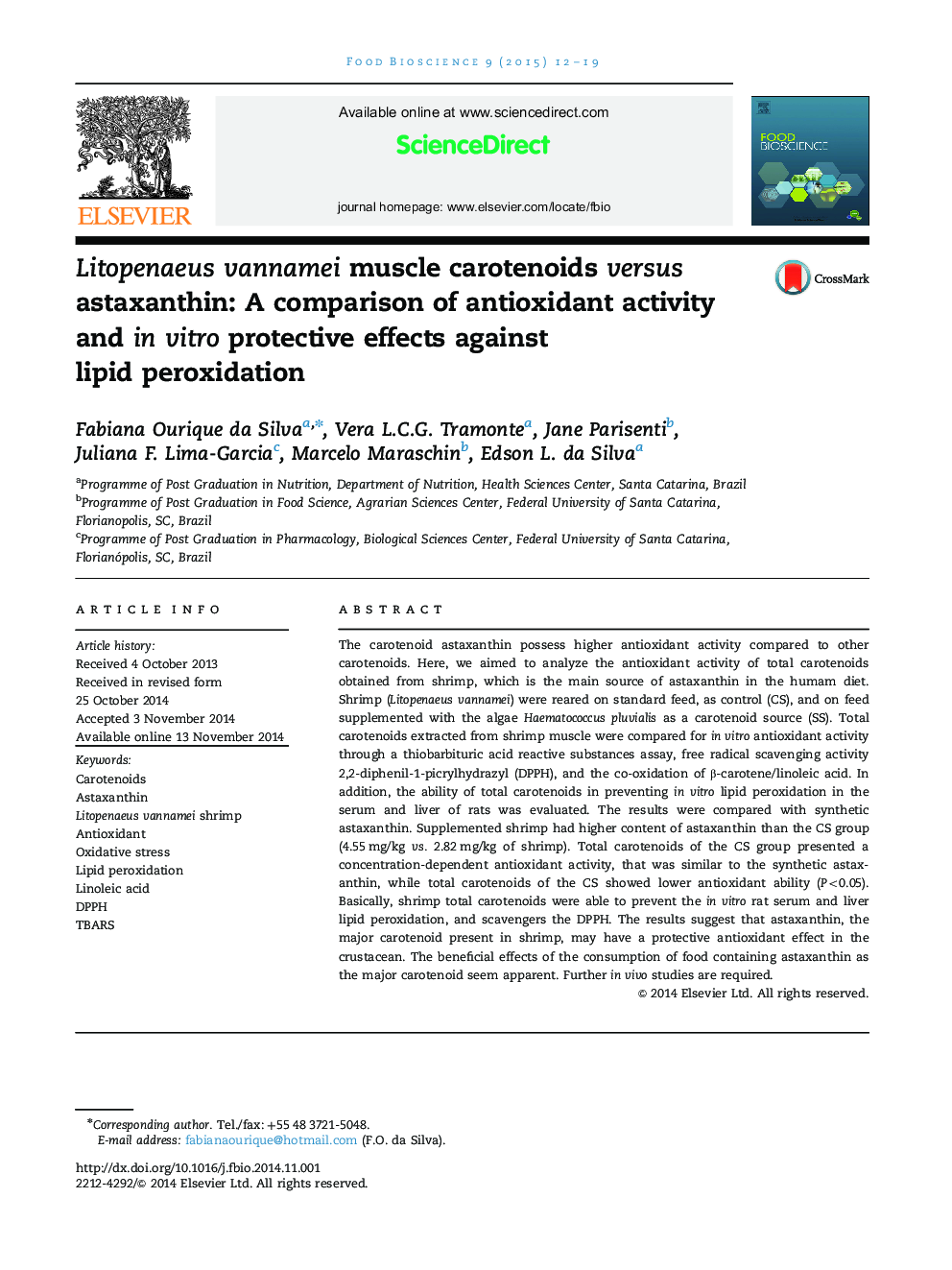| Article ID | Journal | Published Year | Pages | File Type |
|---|---|---|---|---|
| 19753 | Food Bioscience | 2015 | 8 Pages |
The carotenoid astaxanthin possess higher antioxidant activity compared to other carotenoids. Here, we aimed to analyze the antioxidant activity of total carotenoids obtained from shrimp, which is the main source of astaxanthin in the humam diet. Shrimp (Litopenaeus vannamei) were reared on standard feed, as control (CS), and on feed supplemented with the algae Haematococcus pluvialis as a carotenoid source (SS). Total carotenoids extracted from shrimp muscle were compared for in vitro antioxidant activity through a thiobarbituric acid reactive substances assay, free radical scavenging activity 2,2-diphenil-1-picrylhydrazyl (DPPH), and the co-oxidation of β-carotene/linoleic acid. In addition, the ability of total carotenoids in preventing in vitro lipid peroxidation in the serum and liver of rats was evaluated. The results were compared with synthetic astaxanthin. Supplemented shrimp had higher content of astaxanthin than the CS group (4.55 mg/kg vs. 2.82 mg/kg of shrimp). Total carotenoids of the CS group presented a concentration-dependent antioxidant activity, that was similar to the synthetic astaxanthin, while total carotenoids of the CS showed lower antioxidant ability (P<0.05). Basically, shrimp total carotenoids were able to prevent the in vitro rat serum and liver lipid peroxidation, and scavengers the DPPH. The results suggest that astaxanthin, the major carotenoid present in shrimp, may have a protective antioxidant effect in the crustacean. The beneficial effects of the consumption of food containing astaxanthin as the major carotenoid seem apparent. Further in vivo studies are required.
